One of the most effective setups for the big game fish like Halibut, Lingcod, Rockfish and more is the infamous swimbait jig. There is nothing quite like jigging up a 200lb halibut or 60lb Lingcod to get the heart pumping in the morning. This simple and easy set up has put fish in the boat over and over again.
Rigging The Jig
First before you thread the hook into the body of the bait make sure to measure where you want the hook to exit. The idea is to have the hook poke out right at the shank as not to deform the appearance of the bait. You of course want it to look natural but if it get twisted, bended, or off center it can also affect the action of the bait.
Start by threading the hook point through the center of body at the head or top of the bait and run it through the the exit point you initially measured. Push the bait flush up to the jig head and your in business. 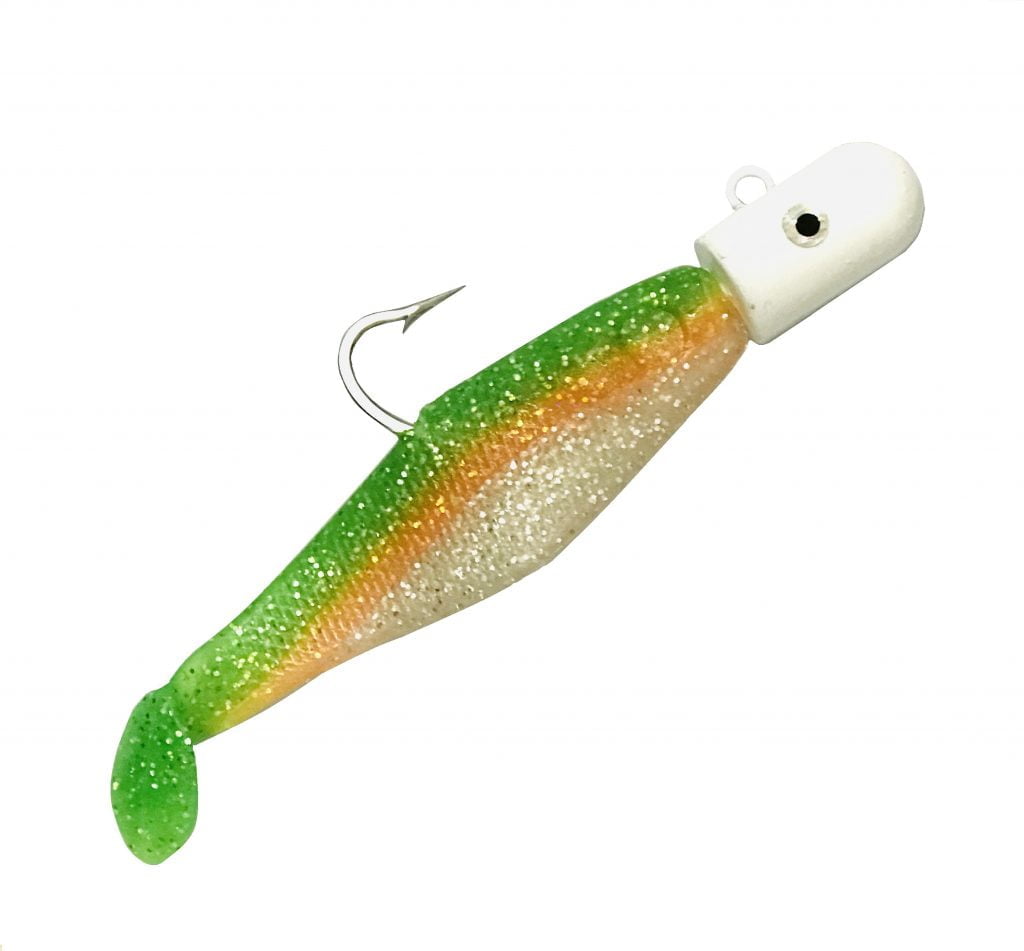
Double Hook Setup
One larger bait like our Boss Hog the double hook rig is all business. This is basically done in the same way as the typical swimbait jig only you add another hook on the lower section of the swim bait thus ensuring a good hook set on the infamous tail bitter. For the set up you need a double barrel swivel and an open eye hook for your secondary hook. Rig as seen in the image below.
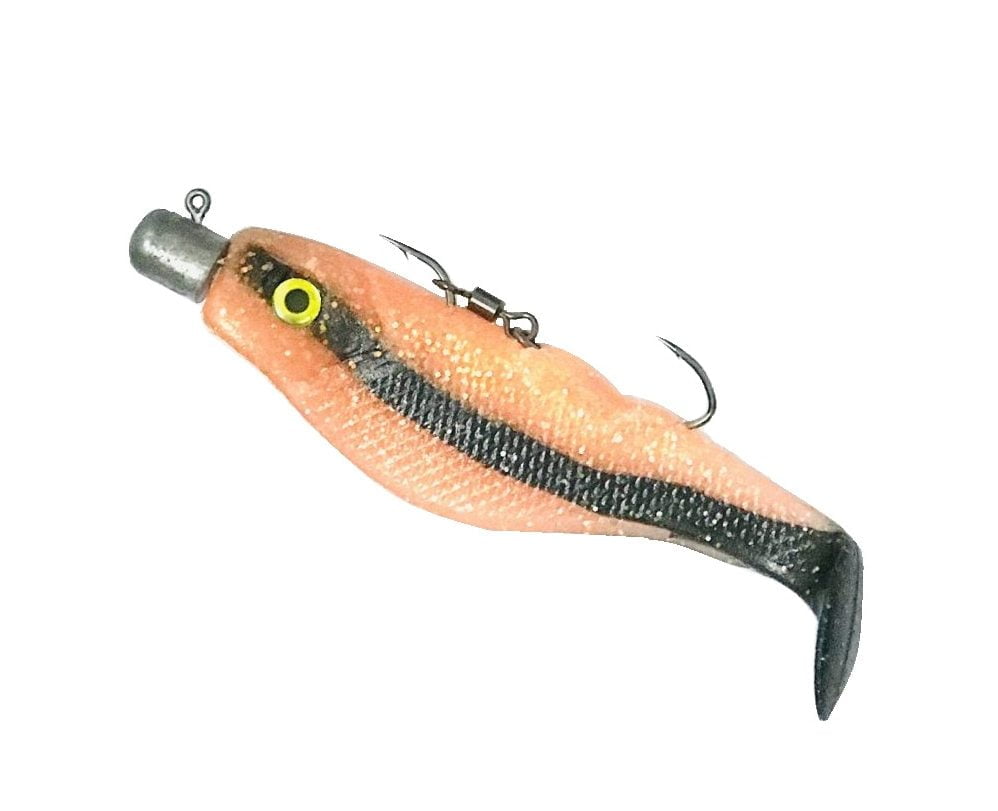 Curly Tail Jig
Curly Tail Jig
The Curly tail jig is another very effective soft bait jig that is a straight up halibut and lingcod killer. Our Horker Twister bomb is the ticket. Select a variety of colors to work in the area your targeting big game fish and see for yourself.
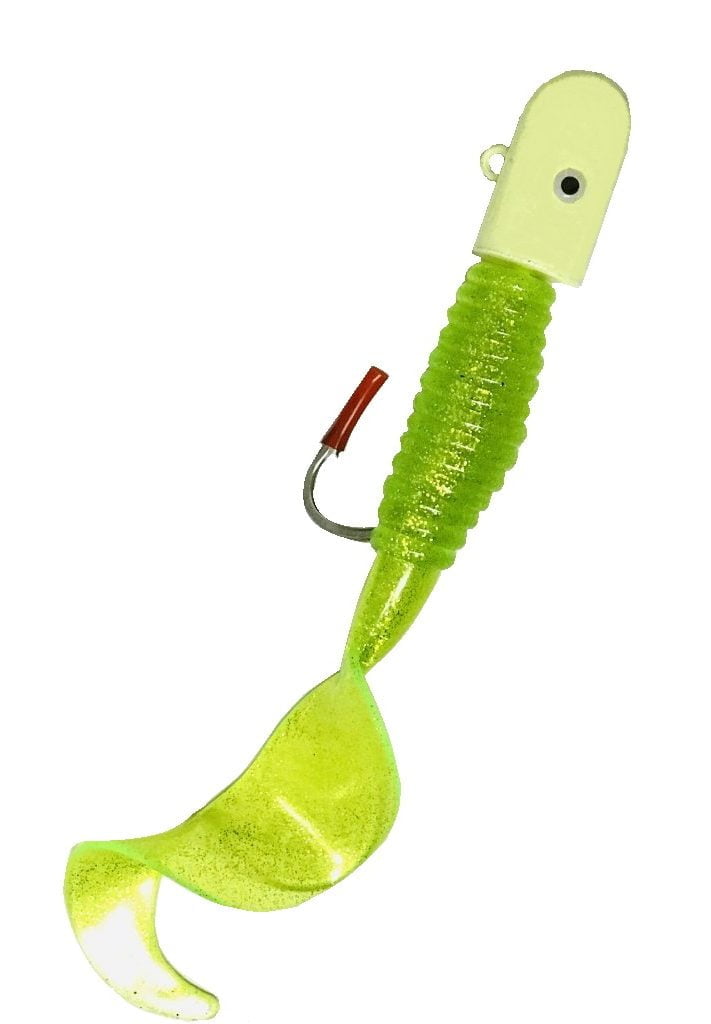
Dropping and Popping
Also known Vertical Jigging, This technique is utilized when fishing off a boat, bridge, or a fishing dock. Basically you drop the lure straight down to the strike zone or off the bottom and work the lure up and down in a popping motion.
This works from a stationary position or on slow drifts, when it is easier to keep the line vertical which prevents snagging on the bottom. If the drift is faster, doing short casts up towards the direction of the drift can help offset the movement of the boat and will help the bait fish more effectively. However you don’t want to let the line get too much of an angle away from the boat this results in an increased chance of hanging up on the bottom or tangling with other fishing party members lines. Keep the line as straight up and down as possible for effectively fishing swimbait jigs.
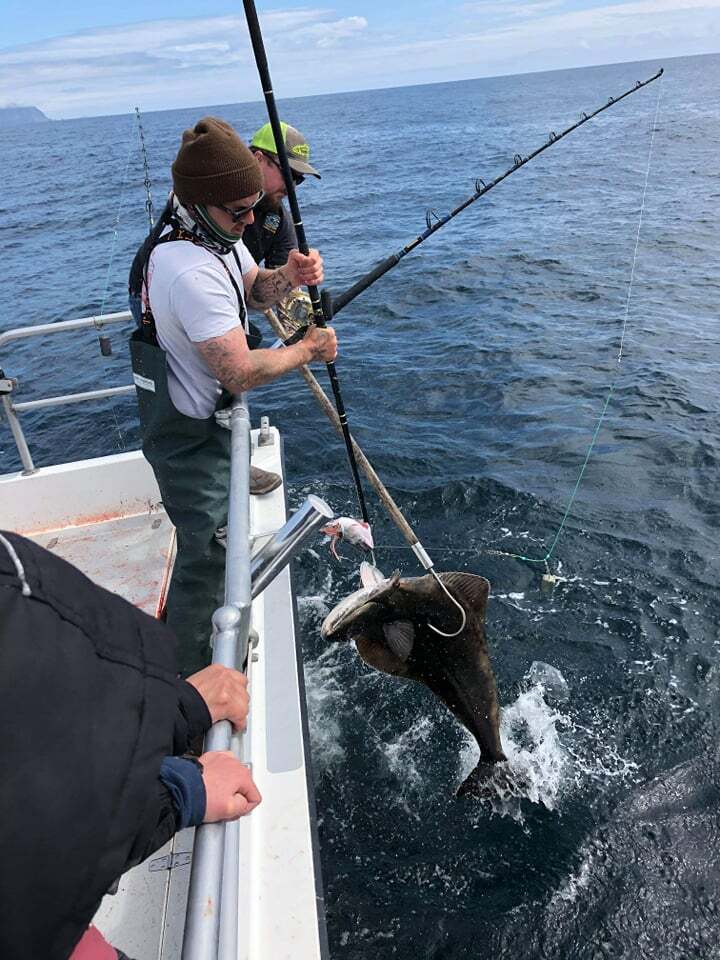
Going Deep
Adjusting the jighead size is also a major factor in maintaining vertical line while drifting. Using a heavier jighead during a faster drift will help you to feel the bottom better and allow the line to stay vertical longer. Oftentimes fish will bite as the swimbait is falling back to the bottom on the drop, make sure to remain aware of the rod tip and the feel of the lure while working it through the strike zone. Also when fishing deep you want to use 8zo to 24oz Jig heads to get it down fast in depths of 80-100 plus feet. Using braided line is recommended when fishing deep as this will increase sensitivity of the rod and allow a superior feel on those subtle bites. This is one of the best ways to target a large variety of bottom fish as well as hunter predators.
Bank and Spank
Bank Fishing swimbaits is an excellent way to cover allot water quickly, especially from the shore. Rock jetties are a perfect spot to target all sorts of inshore species like lings and rock fish with Horker swimbaits. Casting down the jetty parallel to the bank and bringing the swimbait up over the rocks can be a deadly effective way to target these fish which are waiting in the rocks to ambush their prey as it comes swimming by.
Making a long cast, letting it drop to the bottom and real in quickly popping the swimbait over the tops of the rocks is a great technique to help trigger the bite. Some anglers approach fishing jetties by targeting the large holes between the rocks where fish may be hiding. Nothing triggers a hungry preditor fish faster than plopping a swimbait right in front of their face. When fishing along the rocks is not working for you, try slowing you role and strategically pitching your swimbait into the holes and caves along the rocks. Be careful though, when a fish bites it can your rig can easily become snagged in the rocks, reel quickly to muscle the fish out of the hole and into open water for a better chance at landing the fish. A stiff rod is preferred to be able to turn the fish in the direction you want as well as to help flip the fish out of the water onto the bank.
Fishing swimbaits on the bottom is also a great way to catch all sorts of fish including Rockfish, Halibut, Stripers, and many others. Oftentimes tidal movements around jetties, bays, and beaches can create vast sand flats which is perfect habitat for fish to lie and wait for prey. Making long casts and bringing the swimbait along the bottom can cover water quickly as well as trigger reaction strikes from hungry fish. If the sandy bottom has sparse rocks mixed in, even better. Choosing the right jighead size is key when fishing the shore. In most situations, the correct jighead weight is one that is heavy enough to maintain bottom contact but not overly heavy where snagging becomes too frequent. Tidal movement can also play a role in the size of the jighead you are using, so it is usually a good idea to try a few different sizes to fine-tune your technique to the area in which you are fishing.
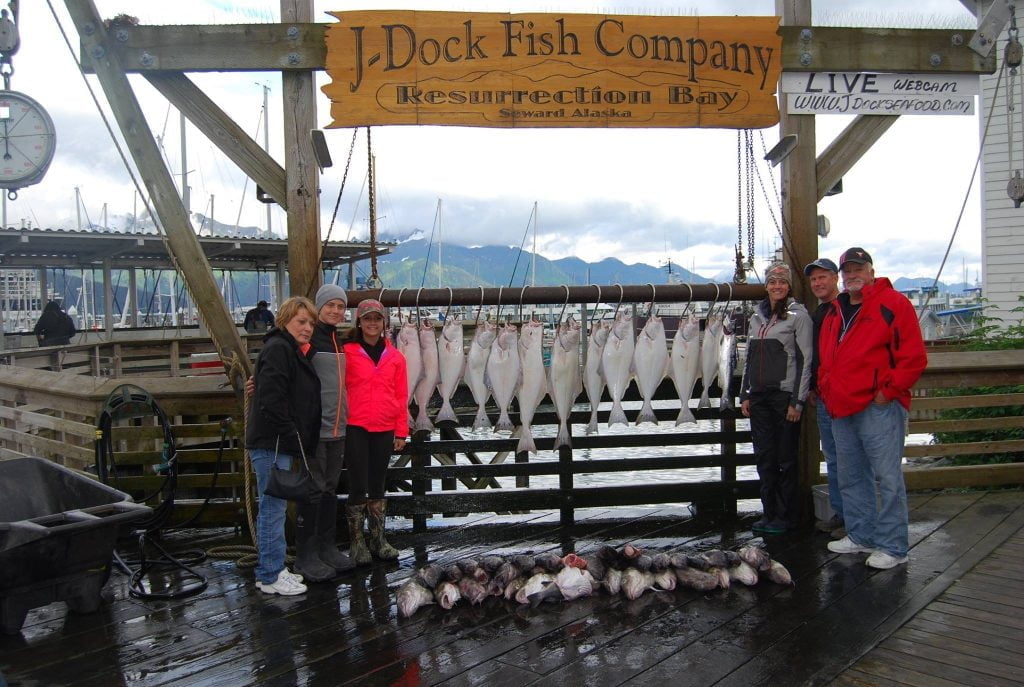
Boat Fishing or Jigging off The Dock
Most of the time fish will be suspended up off the bottom, making it a little more difficult to target them. Schooling bottom fish like Black and Blue Rockfish as well as warmer water species such as Calico Bass oftentimes suspend off the bottom. Kelp beds are an excellent place to start. Positioning the boat just outside the kelp and casting in towards the edge of bed one of your best bets. Let the swimbait fall and start jigging. Many times fish follow the swimbait on its decent and bite as it is falling. Depending on how deep you are fishing you may not need to let the bait fall all the way to the bottom. Varying your retrieve to find which action is best for the water conditions is the best way to work the area and have the most productive day on the water. Sometimes when the bite is slow burn the reel and reeled quickly working the bait near the surface. If that doesn’t do the trick work the bait low and slow near the bottom. The bite will let you know what style is producing. When you find one that works, stick with it.

